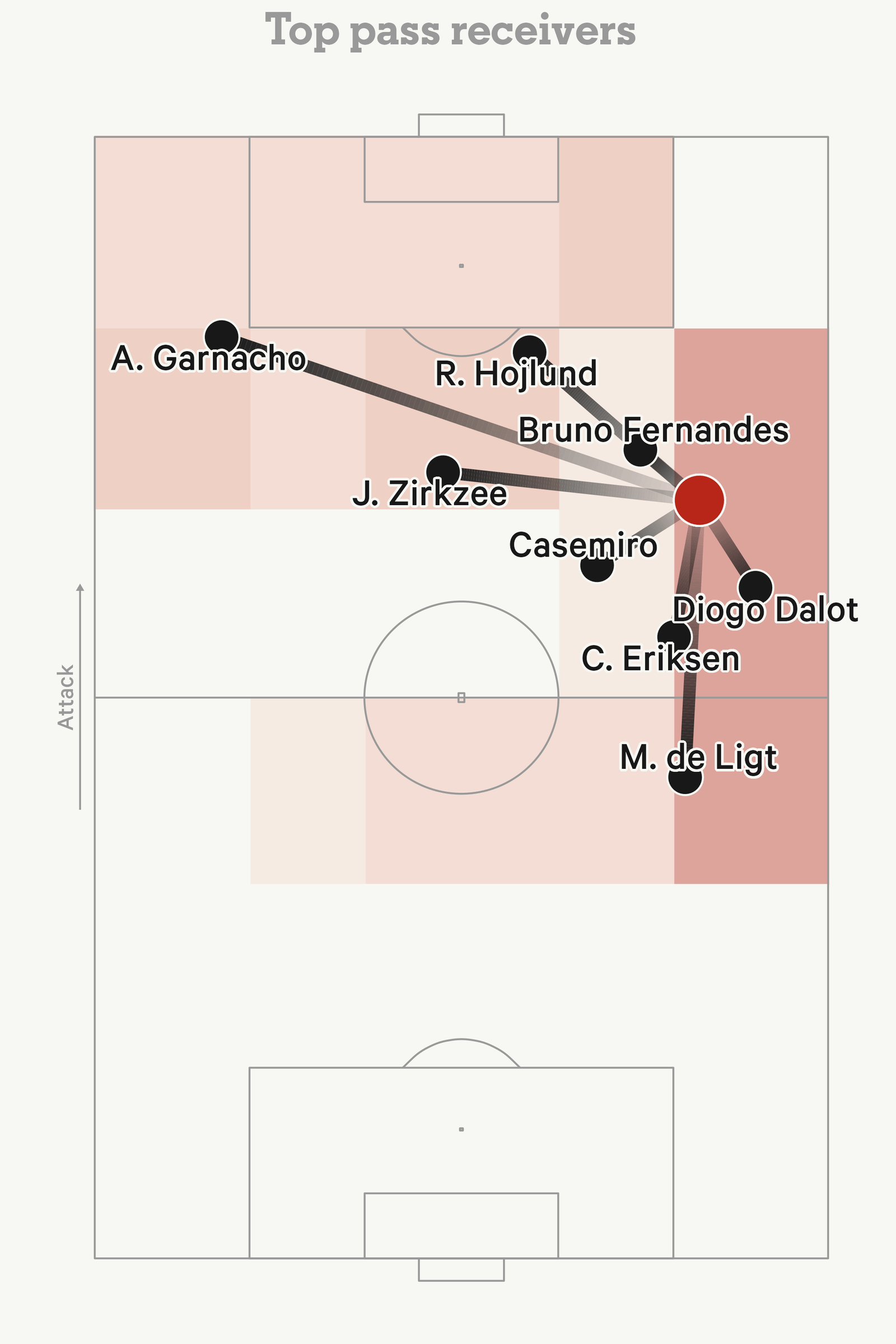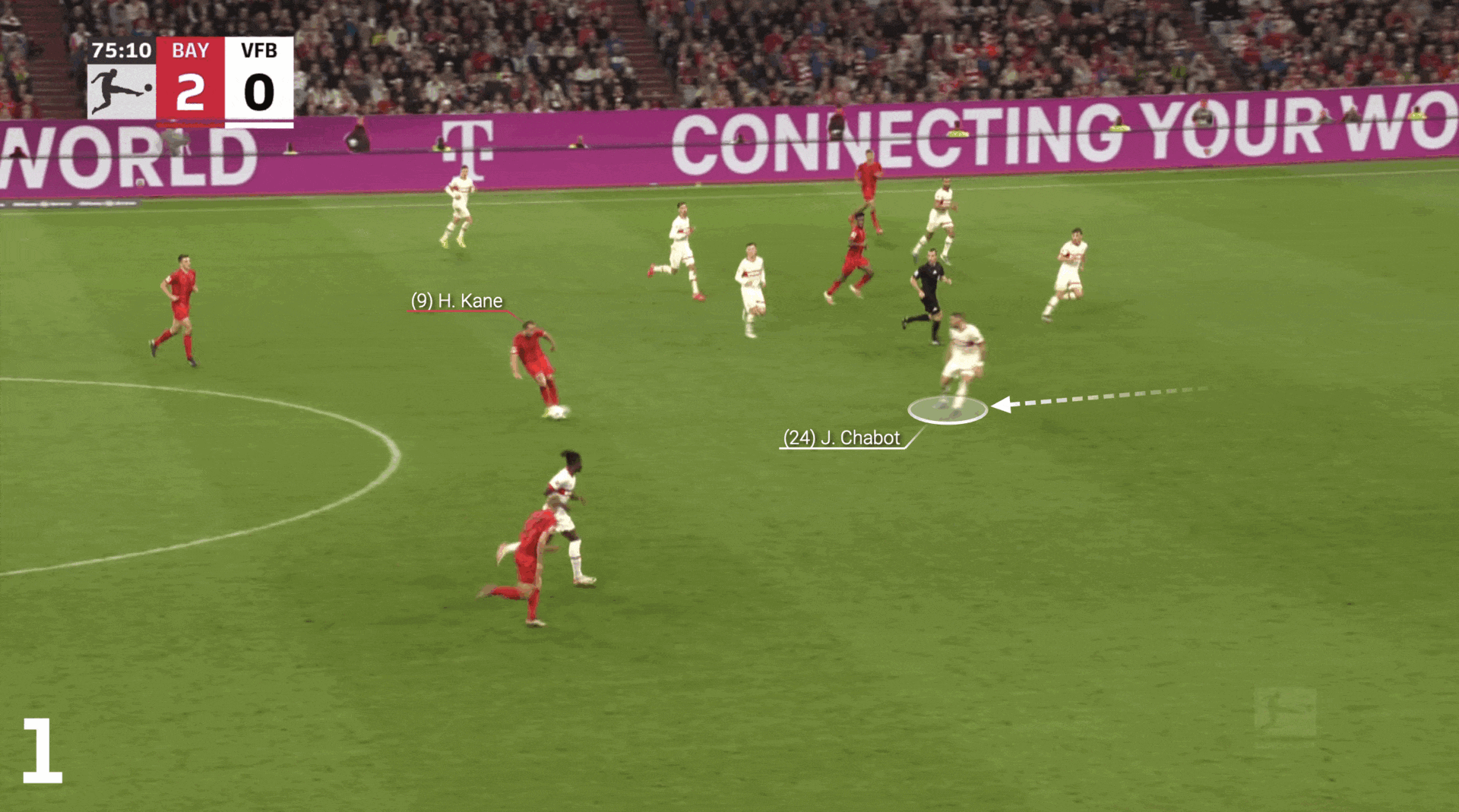It was a promising weekend for two players who will hope to star for England in the Thomas Tuchel era: Marcus Rashford and Harry Kane.
The Manchester United man created four goalscoring chances in his side’s 2-1 win against Brentford, while the England captain scored a hat-trick for Bayern Munich against Stuttgart, his first goals for nearly a month.
Those were the headline numbers, but tracking a player’s complete performance across a game can be challenging.
Sure, you could watch back each individual action to determine their impact — but what if there were a quicker, easier way to draw insight from a player’s time on the pitch?
Much in the same way that The Athletic has developed match dashboards at the team level, we now have a player-level summary of an individual’s output.
No performance can be boiled down to a single data visualisation, but the new dashboard is designed to give you a flavour of a player’s on-ball actions and benchmark them against others on the pitch. (As ever, feel free to drop us a comment below with any feedback or ideas that you would like to see.)
Let’s dive into Rashford and Kane’s weekends…
There will be plenty of players who will be keen to hit some form going into the winter months — none more so than Marcus Rashford.
Rashford’s last international appearance was in March 2024, with a season of poor performances seeing him miss out on a place in the England squad for this summer’s European Championships.
Despite a slow start to this season, Rashford looks to be regaining some form this campaign. The 26-year-old was instrumental in Manchester United’s 2-1 victory over Brentford on Saturday, particularly in the second half.
(Gareth Copley/Getty Images)
He might not have got on the scoresheet but Rashford’s four open-play chances created were the most registered since a 3-1 victory over Aston Villa in May 2021, as he operated in a lesser-spotted right-sided role in United’s attack on Saturday afternoon.
Rashford frequently rolled inside to make way for Diogo Dalot to overlap but often kept his width when receiving the ball near the touchline — occasionally drifting over to the comfort of his traditional left-sided during the second half.
This is shown in the pitch plot below, breaking down each of his successful (green shade) and unsuccessful (light shade) events across his stellar performance — including his passes, carries, shots, and defensive actions.

If you don’t fancy diving straight in at the deep end, the detailed pitch map is accompanied by a simple open-play heatmap that breaks down each on-ball event into small bins per location.
Looking at this graphic alone highlights how much Rashford hugged the right touchline before flirting with his familiar left flank on occasion.

A notable part of Saturday’s performance was Rashford’s sweeping crossfield balls when looking for Alejandro Garnacho on the left wing, which is also highlighted in Rashford’s ‘top pass receivers’ in the top-right of the player dashboard.

Rashford’s five passes attempted to his Argentine team-mate was the most since February 2024 (six) against Luton Town. Of course, the key pass on the day was Rashford’s perfectly weighted assist to find Garnacho at the far post and restore parity at the start of the second half.

Crucially, the player dashboard highlights just how influential Rashford’s passing was across the whole game.
His 10 progressive passes — defined as passes that move the ball 25 per cent closer to the centre of the goal — were more than any other player across both teams on the day. Alongside his four progressive carries (the second-highest of any player), the numbers point to a Rashford performance reminiscent of old.
Anyone watching the game could see that Rashford had a hand in a lot of the positive actions that United had going forward — but this can be easily outlined in the numbers.
When looking at United’s open-play shot-ending sequences — broken down by shots, chances created, or an action in the build-up to a shot, Rashford was involved in 11 of them, which was more than any other player. Put simply, of the 23 shots that United had across the game — their most in a Premier League game this season — Rashford was involved in nearly half of them.

Another English player on the top of his attacking game this weekend was Harry Kane, emphatically ending a mini-goal drought with a hat-trick in a 4-0 win over Stuttgart.
Kane launched 10 shots towards Alexander Nubel on Saturday, the most in a single game throughout his Bundesliga career, finding the net for the first time since he rolled home a Michael Olise cutback 28 days ago.
As always with Kane, however, there was much more to this performance than just the goals. Like Rashford, Kane led the game for shot-ending attacking sequence involvements, with his tally of 12 edging out creative duo Thomas Muller and Joshua Kimmich (both 10) through a destructive mix of sweeping distribution and well-timed runs into the box.

Take this slick attacking move minutes before he scored his third, dropping into midfield to receive the pass from Kingsley Coman, before spreading the play to Leroy Sane.
Kane’s movement drags Stuttgart centre-back Julian Chabot into an awkward advanced position, creating the space for Konrad Laimer to attack from deep. Without directly creating a shot, Kane’s importance in the sequence is captured in the metrics table on the player dashboard.

For a striker of Kane’s disposition to drop deep, the dashboard helps contextualise the value of his actions away from the penalty box. He completed 26 passes against Stuttgart — 12 of those in his own half — a figure that he has only topped twice in a Bayern Munich shirt.
Looking at his pass receiver map, you can see how often he linked up with Bayern’s back line — completing three passes each to Alphonso Davies and Dayot Upamecano to retain possession in the build-up phase.
But he also looks to be expansive, with long forward balls to Sane, Muller and Serge Gnabry — the kind of passes that have helped him to four Bundesliga assists already this season.
Kane finished five short of the German top-flight record for goals last campaign. The early signs are that those chances will not dry up and that he will be even more involved from a chance-creation perspective in a more fluid centre-forward role.
If, or when, that happens, The Athletic’s new suite of data visualisations will be there to tell the story.
(Header photos: Getty Images)
Read the full article here


